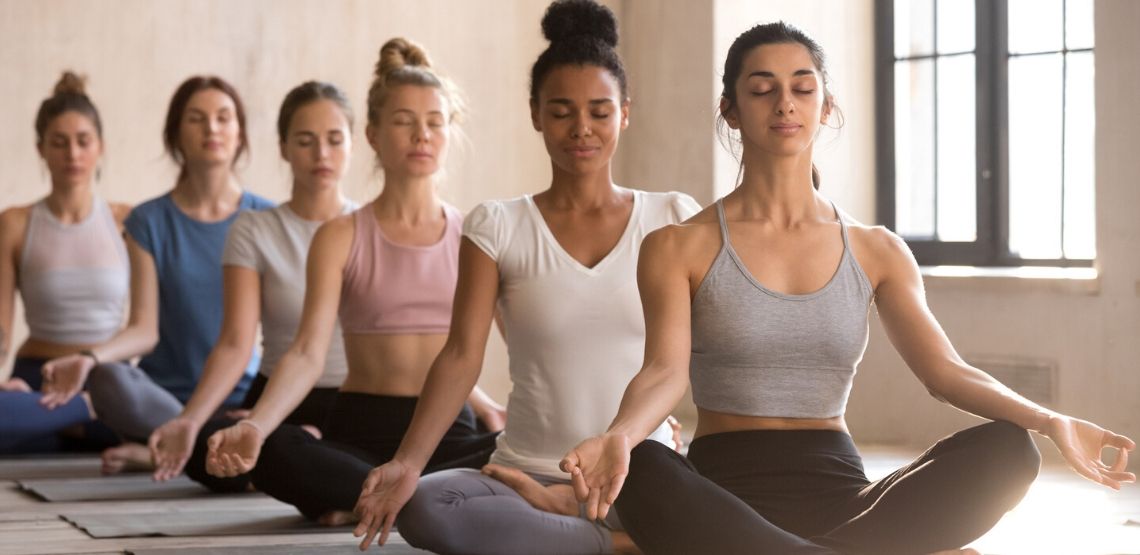The Different Types of Yoga
Yoga has become very commonplace in the West, but getting your head around all the different types of yoga can be overwhelming if you’re just starting out.
Yoga as a practice dates back some 5,000 years. The text The Yoga Sūtras of Patañjali is a collection of 169 Indian sutras or aphorisms on the theory and practice of yoga.
The Yoga Sūtras of Patañjali
These sutras were compiled before 400 BCE by Patanjali. He organized and synthesized the knowledge about yoga from older traditions. The Yoga Sūtras of Patañjali was translated into about forty languages during the medieval era before falling into relative obscurity between the 12th and 19th centuries CE. Swami Vivekananda and others (including the Theosophical Society) through various efforts helped the text to make a comeback in the late 19th century CE. (Read the full text of the sutras here.)
Swami Vivekananda adapted the yoga tradition and included the asanas in his teachings. Indeed, outside India, yoga has developed as a technique of stress-relief, relaxation and posture-based physical fitness.
The Benefits of Different Types of Yoga
You can support a balanced and active lifestyle with yoga by incorporating it into your daily or weekly routine.
Yoga builds strength, awareness and harmony in your mind and body. It is actually known for assisting with relaxation and releasing stress. Studies have shown that as little as 10 weeks of yoga can reduce stress and anxiety. You can read more about anxiety here. One study has even shown yoga to help relieve the symptoms of PTSD.
Not only great for relieving anxiety, yoga can also help relieve the symptoms of depression and may even lower levels of cortisol. However, yoga is not only for mental health, but also for physical health. For example, yoga may help to reduce inflammation in the body.
Yoga may also help to improve heart health when combined with a healthy lifestyle, and it may even lower your blood pressure. If you’re suffering from chronic pain, yoga could also be a way of relieving the pain to a certain degree.
Yoga also assists with flexibility and balance besides strengthening the muscles. It can also promote healthy eating, better breathing and could even help you to sleep better, leading to an overall healthier lifestyle.
The 8 Major Styles of Yoga
There is not just one style of yoga, but several, including:
- Anusara
- Ashtanga
- Bikram
- Hatha
- Sivananda
- Iyengar
- Restorative
- Vinyasa
Let’s look at each of these in turn and see how they differ from one another.
Anusara
This style of yoga is a relatively new and was developed by American yogi John Friend in 1997. Anusara is based on the belief that we’re all filled with intrinsic goodness (Gaiam).
Students of Anusara yoga use physical practice to open their hearts, experience grace and to let their inner goodness shine through.
Anusara is quite rigorous on the body and mind, as each class explores Friend’s Universal Principles of Alignment.
Ashtanga
Ashtanga yoga is similar to Vinyasa yoga and consists of a physically demanding yoga style that uses a specific sequence of postures. It is based on ancient yoga teachings, although it was only popularized (and brought to the West) in the 1970s by K. Pattabhi Jois.
Bikram
Bikram is one of the most popular styles of yoga. Developed by Bikram Choudhury some 30 years ago, this style of yoga is held in artificially heated rooms (105 degrees Fahrenheit with 40% humidity).
Consisting of 26 poses that always follow the same sequence, students will sweat a lot because of the heated environment. Remember to stay hydrated when doing Bikram yoga!
Related Search Topics (Ads)
Sometimes Bikram yoga may also be referred to as “hot yoga”, and this may deviate slightly from “true” Bikram yoga.
Hatha
A generic term that refers to any style of yoga where physical postures are taught; Hatha yoga describes nearly every yoga class taught in the West.
The most basic yoga postures are used in Hatha yoga, leaving you feeling longer, looser and more relaxed.
Iyengar
Iyengar yoga was developed and popularized by B.K.S. Iyengar at about the same time as Ashtanga yoga. Usually taught without music and at a slow pace, Iyengar yoga emphasizes the alignment of the asanas using breath control through pranayama.
It also makes use of bolsters, blankets, blocks and straps. Students of Iyengar go deeper into the postures than, for instance, Hatha yoga.
Iyengar is physically and mentally challenging even though you won’t necessarily break out in a sweat.
Restorative (Also Called Yin or Taoist Yoga)
Relaxing and soothing, Restorative yoga uses bolsters, blankets and blocks to prop students into passive poses. These passive poses allow the body to experience the benefits of a certain pose, without exerting the effort required to keep the pose.
Said to be more rejuvenating than a nap, these classes are often offered in the evening.
Sivananda
Brought to the West (specifically the US) by Swami Vishnidevananda in 1957, this style of yoga is a system based on the five yogic principles:
- Exercise
- Diet
- Positive thinking
- Proper breathing
- Relaxation
All of these principles work together to form a healthy, yogic lifestyle. The twelve basic postures or variations of the Asanas are usually done along with Sun Salutations and Savasana. Sivananda yoga is also practiced without music.
Vinyasa
A flowing sequence of postures (“vinyasa flow”) as well as linking breathing with movement is the backbone of Vinyasa yoga. “Vinyasa” roughly translates as “to place in a special way” and refers to the postures used in this style of yoga.
Because of the flowing nature of the movements, they can be memorized and done as a moving meditation, almost like a dance.
Vinyasa yoga is usually practiced with pleasant music and in a dark or semi dark room with the eyes closed. Candlelight is usually used to light the room if the room is not kept completely dark.
There is truly a yoga style for everyone, so why not try a few different types of yoga before settling on one or more that suits you?


